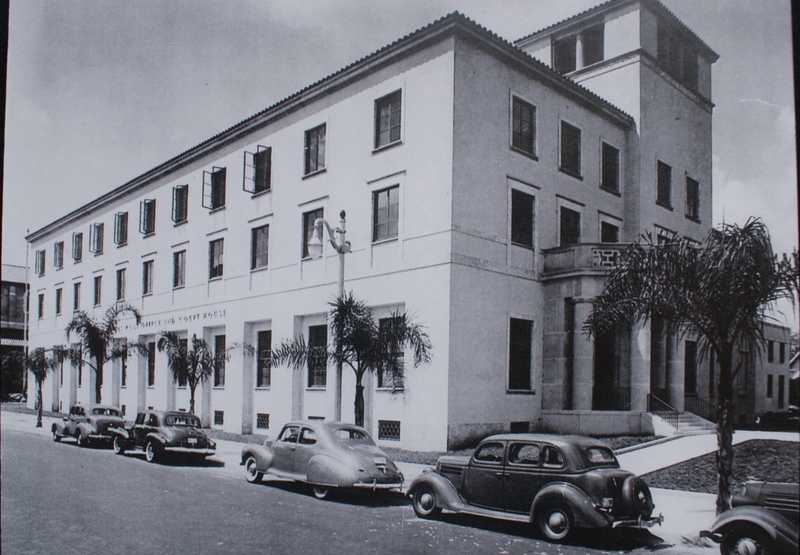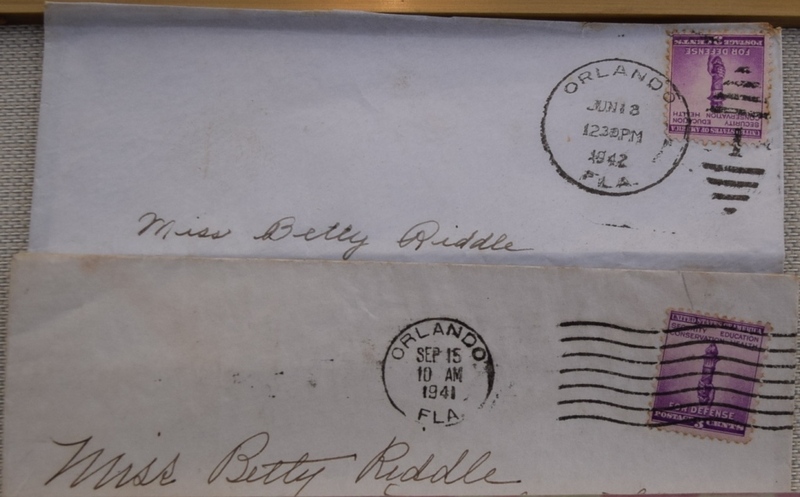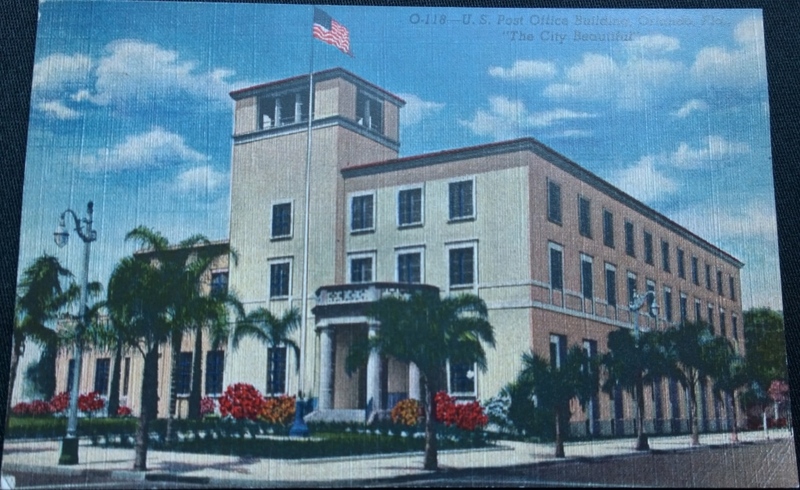The Post Office Joins the War
After Orlando survived the Great Depression, it headed into another conflict: World War II. Orlando was anything but passive when it came to the war effort. Before the United States entered the war, Florida highly encouraged American involvement in the fight. Orlando converted the Orlando Municipal Airport (present-day Orlando Executive Airport) into Orlando Army Air Base, where many pilots, including some from Britain, trained for the war. Orlando even housed German prisoners of war. These prisoners worked in Orlando's citrus industry and in laundry facilities to help make up for the loss of workers due to the war. The Downtown Orlando Post Office also contributed to society during wartime. As Orlando and the nation became more involved in WWII, the post office served as a base of local operations and a symbol of changing dynamics in the community.
The post office and written communication during World War II were vital parts of American society and even helped to win the conflict. Throughout the United States, the amount of mail being processed increased by 10 billion pieces from 1940 to 1945. This was largely due to letters that were sent from the homefront to those fighting overseas. These letters were extremely important to the soldiers who received them. Not only did the letters serve to boost service men's and women's morale, they also allowed those stationed overseas to keep in contact with loved ones and what was happening on the homefront.
These envelopes were stamped 1941 and 1942, right around the time the United States entered the war. The envelopes were sent to Miss Betty Riddle who was a teenager living in Orlando at the time. Miss Riddle’s family was very involved in the city of Orlando. Although it is unclear who the letters came from, it is possible that Riddle was one of the many American girls who had regular correspondence with U.S. troops during the war. The three cent defense stamps on both of the envelopes were an attempt by President Roosevelt to raise money for the war effort.
Letters weren’t the only way the post office added to the war effort. The building itself was also used as a lookout tower by local women where they would watch for enemy planes. The post office continued to adapt to the changes that occurred during the war, and once the war was won, it remained a central part of the Orlando community.
Bibliography
Clark, James C. Orlando Florida: A Brief History. Charleston: The History Press, 2013.
Whitmore, N. "Betty Riddle Whitmire." Find A Grave. Accessed November 9, 2015. http://www.findagrave.com/cgi-bin/fg.cgi?page=gr&GRid=99085322.
"Betty Riddle." Family Search. Accessed November 9, 2015. https://familysearch.org/ark:/61903/1:1:MNVG-4RD.
Litoff, Judy Barrett and David C. Smith. "'Writing is Fighting, Too': The World War II Correspondence of Southern Women." The Georgia Historical Quarterly 76, no. 2 (Summer 1992): 436-458. http://www.jstor.org/stable/40582546?seq=11#page_scan_tab_contents.
"Orlando Remembered Post Office Exhibit." RICHES of Central Florida. https://richesmi.cah.ucf.edu/omeka2/items/show/6499.
Rajtar, Steve. A Guide to Historic Orlando. Charleston, SC: History Press, 2006.
Rod, Steven J. "3-cent Torch of Enlightenment." Arago. Accessed September 19, 2015. http://arago.si.edu/category_2028701.html.
Rogers, Ben F. "Florida in World War II: Tourists and Citrus." Florida Historical Quarterly 39, no. 1 (July 1960): 34-41. Accessed October 19, 2015. http://resolver.flvc.org/ucf?genre=article&atitle=FLORIDA%20IN%20WORLD%20WAR%20II:%20TOURISTS%20AND%20CITRUS.&title=Florida%20Historical%20Quarterly&issn=00154113&isbn=&volume=39&issue=1&date=19600701&aulast=Rogers%2C%20Ben%20F.&spage=34&pages=34-41&rft.sid=EBSCO:America%3A%20History%20%26%20Life:45970675.


